Hoka vs. Brooks Running Shoes: 5 Main Differences
Author:
Unlock your full potential by engaging with our experts and community! Have questions about your fitness journey or looking for expert advice on weightlifting techniques? Don’t hesitate — leave a comment below and Oleksandr Zagrebelnyi will provide a personalized answer and insights to help you reach your goals.
Torokhtiy is reader-supported. Some links are affiliate links, and we may earn a commission at no extra cost to you. See our disclosure page for details.
Many runners find themselves choosing between Hoka vs. Brooks running shoes for the best fit. To help you make the best decision possible, it is important to understand the main differences between these two popular brands.
Today, we will compare the features of Brooks running shoes vs. Hoka, with a focus on cushioning, fit and sizing, stability, and support.
Let’s dive in!
Hoka vs Brooks shoes – Both offer a wide variety of models that cater to different needs. Hokas feature maximum cushioning to provide lightweight support, with energy return for responsive transitions. Brooks’ midsole offers superior shock absorption, with ample energy return. Meanwhile, 3D Fit Print overlays add stability during faster runs.
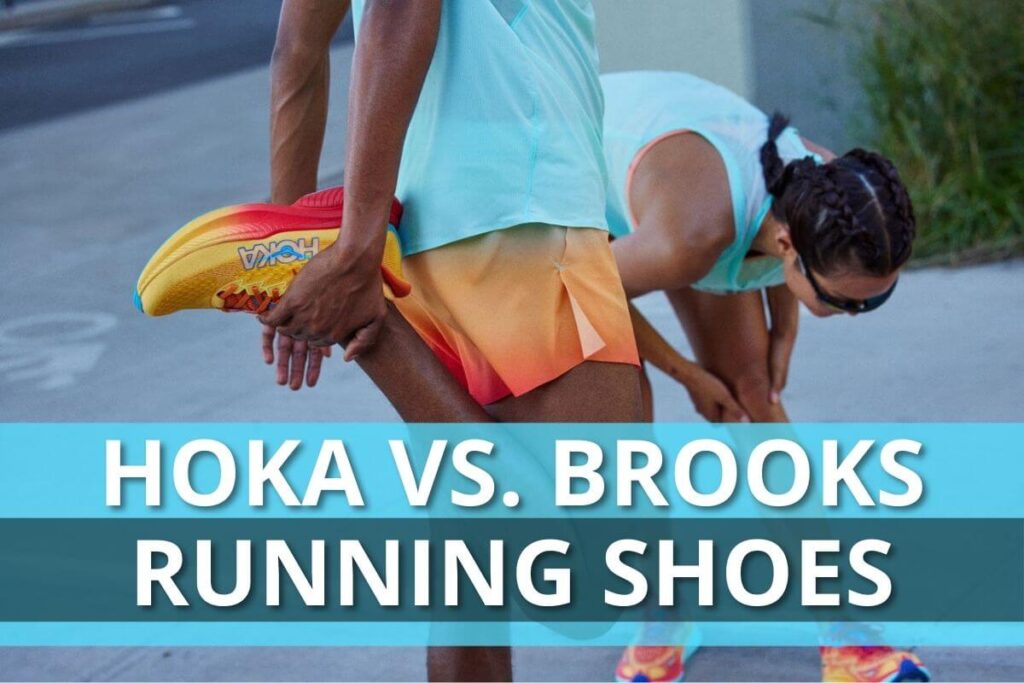
What Are Hoka Running Shoes?
Hoka running shoes are famous for their ultra-cushioned soles, providing superior shock absorption and comfort. Their assortment of running shoes features specific models designed to address issues like arch strength and pronation. Hokas have special materials, such as EVA foam midsoles, which offer more cushioning than traditional running trainers.
With a wide range of sizes, Hokas has you covered, no matter your size or foot shape. Meanwhile, lightweight mesh uppers ensure breathability so your feet stay cool even on long runs. It’s unsurprising that Hoka One One has become such a phenomenon among runners.
They provide super supportive shoes for many different types of feet, while also being incredibly comfortable thanks to that unbeatable cushioning.
Hokas offer a wide range of options to support runners on different surfaces and address various foot problems. Hoka’s shoes are specifically designed with extra-padded soles that cushion the feet during impact while providing arch support to prevent overpronation.
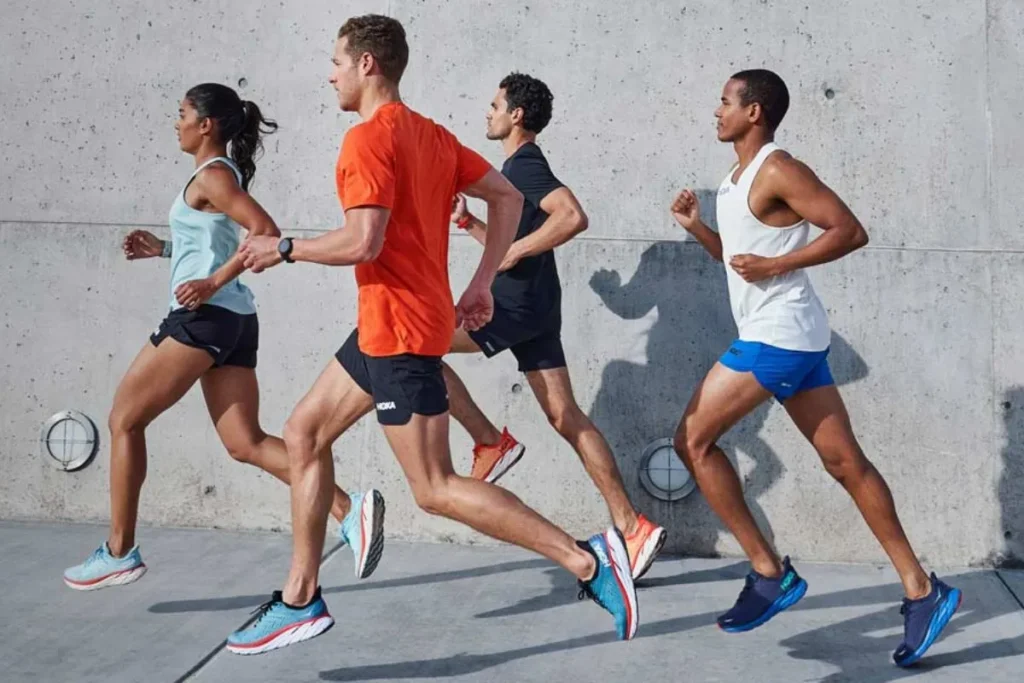
What Are Brooks Running Shoes?
Many people wonder, “Are Brooks good running shoes?” The brand has developed widely acclaimed technologies, such as DNA loft midsole cushioning and Released Energy foam, providing superior impact absorption without sacrificing responsiveness.
These features make Brooks an incredibly popular shoe among serious runners who rely on trusted quality when putting in the miles.
Brooks offers a variety of running shoe models to cater to different needs, like overpronation, cushioning, and trail running. From traditional road shoes for pavement or track racing to cushioned shoes for long-haul runs, they have something for just about everyone.
Brooks also has more conventional shoes, but even these provide ample cushioning options, combined with stability and agility for a wide range of runners’ feet issues.
Their running shoes are designed to accommodate different foot shapes and sizes. Brooks recommends sizing up half a size from your street shoe or usual running shoe size. This is due to the company’s snugger design, which provides extra support through gripping locks at arch level.
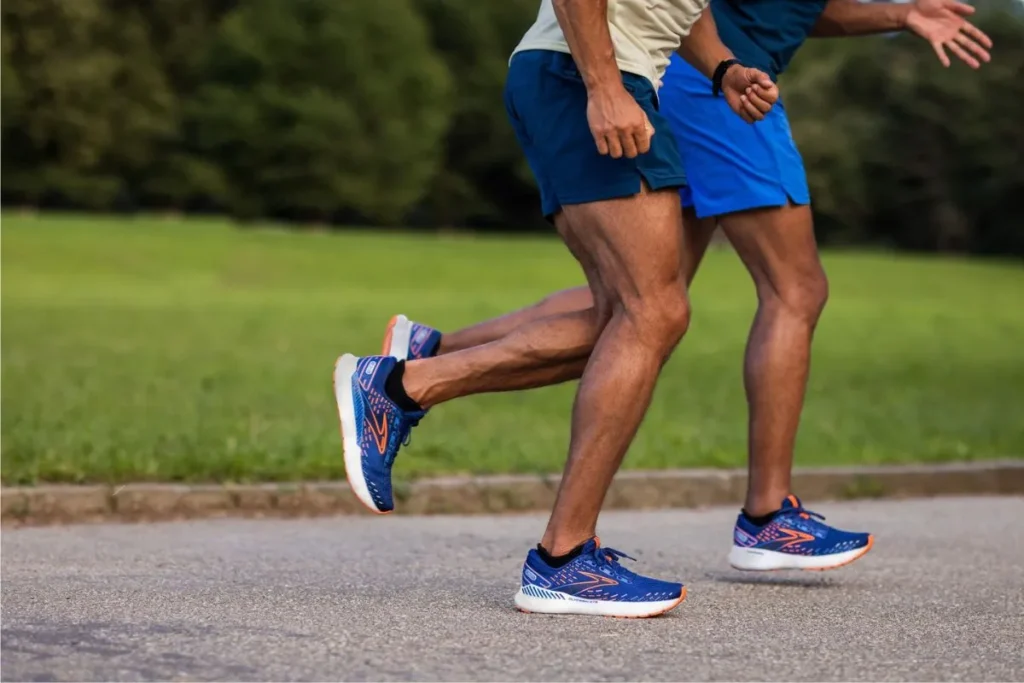
Hoka vs Brooks: What Are the Main Differences?
So, what shoe is better: Hoka or Brooks? Comparing durability, fit and sizing, cushioning, stability, and the price of Hoka and Brooks running shoes will help you to decide which is better for your needs.
1. Durability
When it comes to durability, both Hoka and Brooks running shoes offer comfortable and reliable options and last a similar length of time. The exact lifespan of each pair varies, but runners can generally expect a pair of Hoka shoes to last between 300 and 500 miles, while Brooks shoes will usually outlast this figure slightly due to extra durable outsole.
Both brands have models that utilize next-generation technologies, such as cushioning foam uppers and special sole designs that make them especially durable during long runs.
2. Fit and Sizing
When it comes to Hoka sizing vs. Brooks, there are some notable differences. Brooks suggests that you size up half a size from your normal shoe size. Meanwhile, Hoka shoes tend to fit true to size.
They are designed with a wider platform than Brooks shoes, and they are better suited for wide feet. That being said, both brands offer various models in different sizes, ensuring that every foot type can run comfortably!
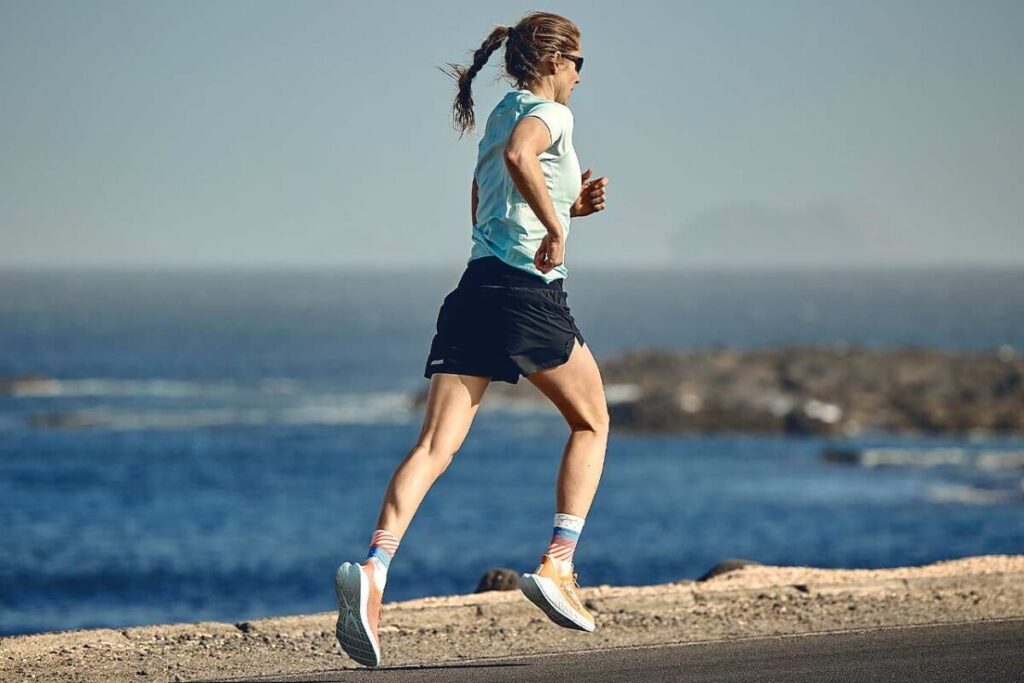
3. Cushioning
Hoka shoes are renowned for providing a maximum amount of cushioning, which helps reduce impact on feet when landing. Compared to Brooks, they have greater foam thickness in their midsoles, offering a softer running experience with maximum protection from impact.
Brooks also has excellent cushioned models, such as Adrenaline GTS 22, Glycerin GTS 20, and Ghost 15. They offer more rigid soles than Hokas, which means improved performance at faster speeds, where stability takes precedence over cushioning.
4. Stability
Both Hoka and Brooks running shoes are designed to provide optimal support and stability for runners. Hoka shoes have a larger outsole that provides more cushioning for a smoother ride and an enhanced feeling of stability on the road or trail.
By contrast, Brooks running shoes have shallower midsoles that are built with traditional design features for long-term comfort. They offer greater stability when compared to the typical models from other brands.
5. Price
When it comes to the cost of Hoka vs. Brooks running shoes, they are fairly comparable. In general, Hokas are a bit more expensive, but popular models of both brands are priced at around $130. There can be some differences in price depending on the individual shoe chosen from either brand.
For example, certain stability and trail models from either collection can increase the price tag significantly, to well above $200 for Hokas and up to $160 for Brooks.
The primary distinctions between Hoka and Brooks
| Parameter | Brooks | Hoka |
|---|---|---|
| Durability | 300-500+ miles | 300-500 miles |
| Breathability | Knit upper | Knit upper |
| Fit | Regular/Wide/X-Wide | Narrow/Regular |
| Cushioning | DNA Foam options | EVA foam |
| Stability | GuideRails Technology | J-Frame technology |
| Price | $100-$130 | $120-$150 |
What to Look for When Buying Running Shoes: Hoka vs. Brooks?
When considering which brand to purchase, it is important for runners to understand the differences between Hoka and Brooks running shoes.
First, Hoka is known for its marshmallow-soft cushioning, which seems to be the obvious choice when it comes to comparing Hoka vs. Brooks for standing all day. This cushioned feel can be especially beneficial in reducing impact on runs that are longer and more intense than usual.
On the other hand, Brooks boasts robust outsoles with thick coverage on the bottom. This provides extra durability that helps them last longer.
In addition to cushioning and strength, when looking at midsole features, both brands offer a unique experience that will appeal to different runner preferences.
The Guide Rails offered by Brooks provide stability along your stride path and have a wide range of options for various terrain. On the other hand, Hoka provides plenty of support through its thick midsoles.
Hoka vs. Brooks: Summary
The primary difference between Hoka shoes and Brooks shoes lies in their cushioning. Let’s summarize the main pros and cons of both brands:
Pros and Cons of Hoka Running Shoes
Hoka running shoes are known for their superior cushioning, which provides runners with extra comfort and stability when running. This greatly reduces knee and back pain, as well as any discomfort that may arise from uneven surfaces.
Additionally, the enhanced technology in Hoka shoes make them suitable for those who have foot problems such as plantar fasciitis. It provides lightweight cushioning and responsiveness while allowing the feet to move freely during runs.
However, due to this added cushion they tend to be more expensive than some of their competitors like Brooks. Furthermore, not everyone appreciates the maximalist design of Hokas, while extra cushioning may not suit all foot types for long runs. That’s why some runners prefer a traditional shoe with less cushioning instead.
Positives:
Could be better:
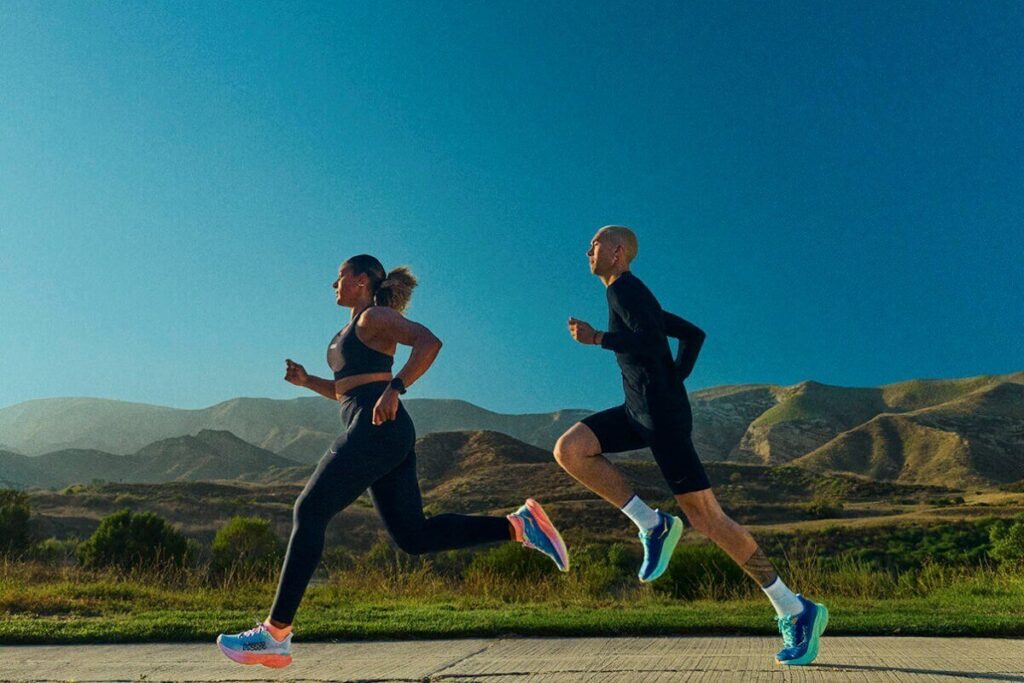
Pros and Cons of Brooks Running Shoes
Brooks is well-known for its science-driven shoe designs, providing runners with amazing support and shock absorption. Their shoes offer a range of technologies that provide enhanced comfort, stability, and cushioning.
DNA Loft cushioning technology delivers premium shock absorption without compromising durability or energy return. The GuideRails Holistic Support System is designed to guide the foot in making smoother transitions from heel to toe.
3D Fit Print overlays provide superior fit with strategic stretch. All these technologies combine to help runners reach peak performance.
However, some reviewers have mentioned durability issues with Brooks uppers due to thinner material construction throughout some sections.
Positives:
Could be better:
Hoka Bondi 8
- Material: Breathable and supportive mesh upper
- Sole Material: Full-length EVA midsole for maximum cushioning
- Outsole (tread feature): Durable rubber outsole with a unique lug pattern
- Drop: 4mm
- Season: Suitable for all seasons
- Special Features: Exceptional cushioning and comfort
- Size: Available in various sizes
- Type: Maximum cushioning running shoe
If you want excellent running or walking shoes or just footwear you’ll be comfortable in, you can’t go wrong with the Hoka Bondi 8.
It’s been upgraded and now they have lighter, softer materials and a new extended heel design. The heel design gives a super soft, balanced feeling from th emoment your heel hits the ground to when you push off with your toes.
As far as the weight goes, it’s around 10.80 ounces, and the heel drop is 4 mm. They’re not too heavy and the lower drop is a good balance between cushioning and feeling connected to the ground.
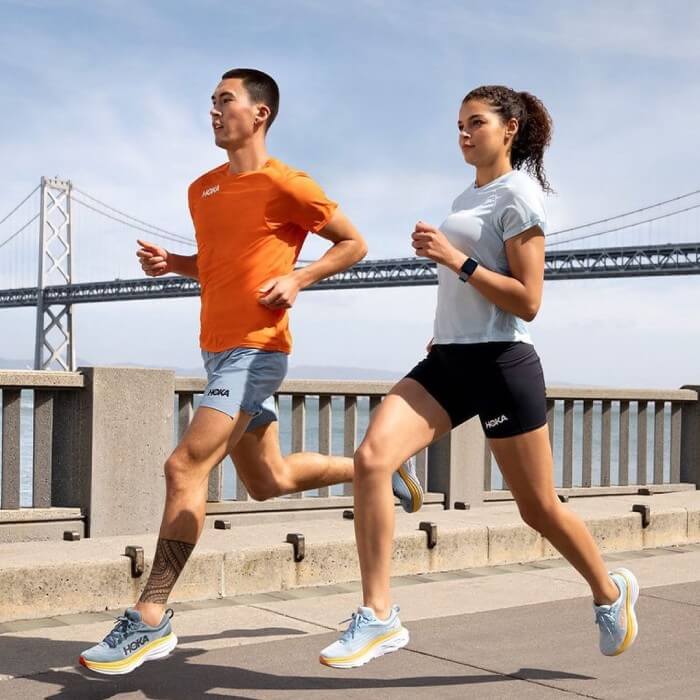
The Bondi 8 is focused on cushioning and keeps things simple. There’s a good amount of support without any extra stuff that you don’t really need and that would only jack up the price. Take the rear crash pad, for example – it makes for a soft, smooth ride, which is perfect if you like to run outdoors.
The upper part is made of engineered mesh, which is breathable and keeps your feet cool and dry. The tongue and collar have memory foam and mold to your foot shape. All of these features make the fit snug but flexible, which is exactly what you would want.
The Bondi 8 is eco-friendly because it uses recyclable materials in parts like the mesh and the sockliner. Plus, the shoes are completely vegan, which (if that’s important to you) is nice!
Brooks Men’s Adrenaline GTS 22 Supportive Running Shoe
- Material: Engineered mesh upper for breathability
- Sole Material: DNA LOFT cushioning for a soft and supportive feel
- Outsole (tread feature): Durable rubber outsole with segmented crash pad
- Drop: 12mm
- Season: Suitable for all seasons
- Special Features: Enhanced support and stability
- Size: Available in various sizes
- Type: Supportive running shoe
The Brooks Men’s Adrenaline GTS 22 is designed to provide a mix of cushioning, stability, and responsiveness. It features the GuideRails Holistic Support System, which provides dynamic guidance as you run, keeping your feet on track without the added stiffness of rigid accessories.
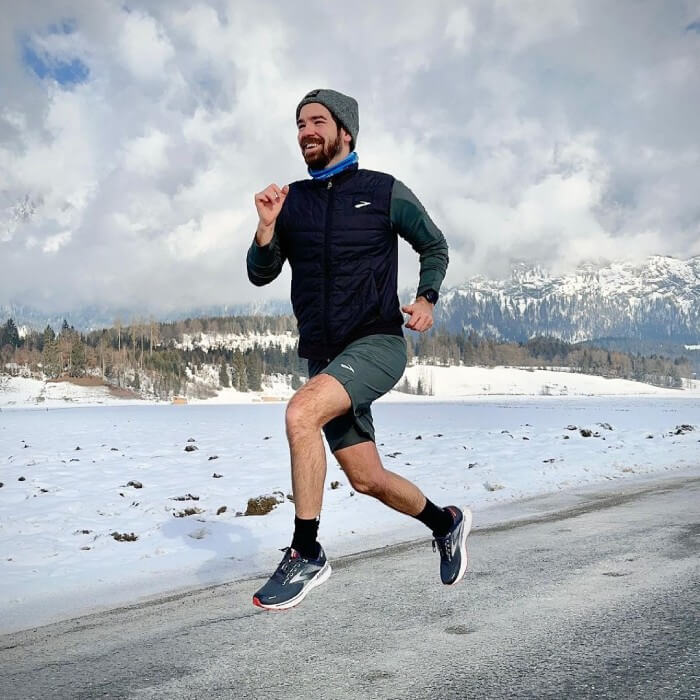
FAQ
Why Do Podiatrists Recommend Hoka?
Podiatrists often recommend HOKA shoes, as they provide superior cushioning and shock absorption compared to regular running or walking shoes. With maximum cushioning, running becomes easier for athletes with knee pain, plantar fasciitis, or back pain.
How Do Hokas Fit Compared to Brooks?
Hokas fit differently than Brooks, as they are designed with a higher profile for maximum cushioning. Hokas provide less space within the shoe, providing snug comfort.
Conclusion
Hoka and Brooks are both great brands that offer their own unique features for different needs. Many runners prefer Hoka’s maximalist approach, with superior cushioning that provides better shock absorption for long runs or intense workouts.
Others prefer the science-driven designs of Brooks shoes, which provide a fine balance between comfort and performance at an affordable price point. Ultimately, it comes down to preference and what shoe fits your personal running style best.
What brand do you prefer? Please share your experience in the comments below.
Also read:
References:
- Pollard CD, et al. Influence of Maximal Running Shoes on Biomechanics Before and After a 5K Run. Orthop J Sports Med. 2018 Jun 7;6(6):2325967118775720. https://journals.sagepub.com/doi/10.1177/2325967118775720
- Kulmala JP, et al. Running in highly cushioned shoes increases leg stiffness and amplifies impact loading. Sci Rep. 2018 Nov 30;8(1):17496. https://www.nature.com/articles/s41598-018-35980-6
- Sun X, et al. Systematic Review of the Role of Footwear Constructions in Running Biomechanics: Implications for Running-Related Injury and Performance. J Sports Sci Med. 2020 Feb 24;19(1):20-37. https://www.ncbi.nlm.nih.gov/pmc/articles/PMC7039038/
- Jafarnezhadgero A, et al. Effects of anti-pronation shoes on lower limb kinematics and kinetics in female runners with pronated feet: The role of physical fatigue. PLoS One. 2019 May 14;14(5):e0216818. https://journals.plos.org/plosone/article?id=10.1371/journal.pone.0216818
- Petraglia F, et al. Plantar fasciitis in athletes: diagnostic and treatment strategies. A systematic review. Muscles Ligaments Tendons J. 2017 May 10;7(1):107-118 https://pubmed.ncbi.nlm.nih.gov/28717618/
- Photos are made by Torokhtiy Media Team, Hoka, Brooks Running
Why Trust Us?
With over 20 years in Olympic weightlifting, strength training, nutrition coaching, and general fitness our team does its best to provide the audience with ultimate support and meet the needs and requirements of advanced athletes and professional lifters, as well as people who strive to open new opportunities and develop their physical capabilities with us.
By trusting the recommendations of our certified experts in coaching, nutrition, and sports training programming, as well as scientific consultants, and physiotherapists, we provide you with thorough, well-considered, and scientifically proven content. All the information given in the articles concerning workout programming, separate exercises, and athletic performance, in general, is based on verified data.
The product testing process is described in more detail here.
Oleksandr is a running coach and member of the Nike Run Club coaching team for 8 years. A participant in national and international competitions at distances from one kilometer to the ultra trail. Owner of mountain trail running camps. Nowadays Oleksandr is responsible for creating running training programs for athletes of various levels, coaching personally offline and online, conducts trail running camps in the mountains, participates in competitions.



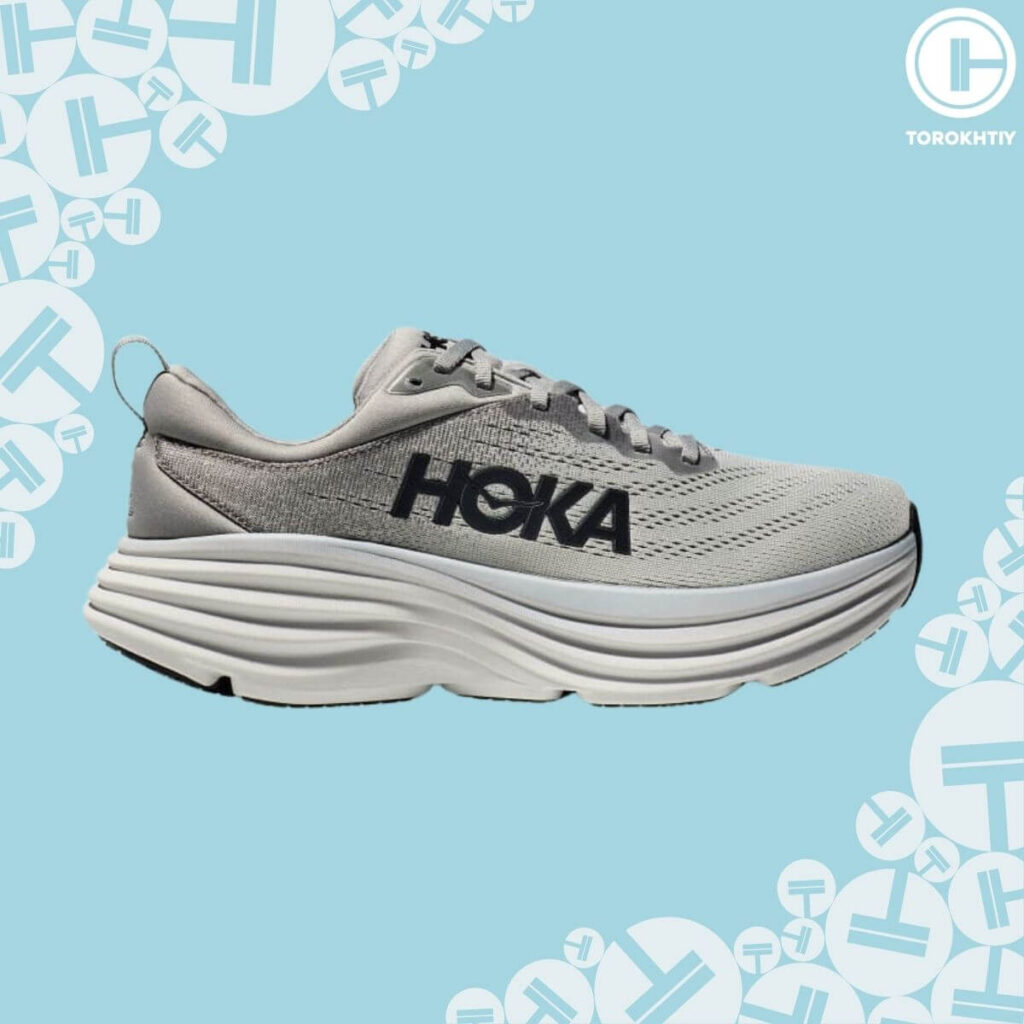
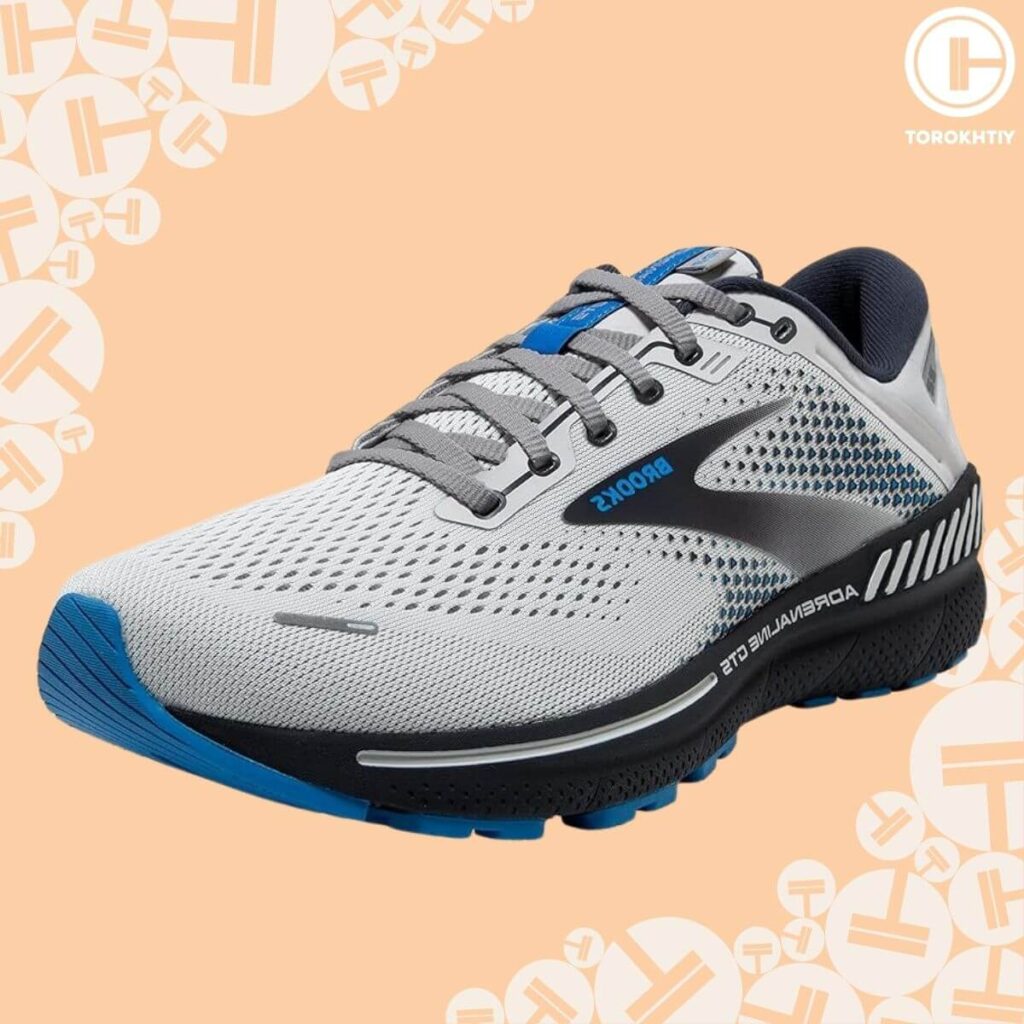
Still have questions after reading our article? Unlock your full potential by engaging with our experts and community! Don’t hesitate — leave a comment below and Oleksandr Zagrebelnyi will provide a personalized answer and insights to help you reach your goals.